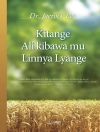To enclaves of young converts tucked away in the mountains of Asia Minor, Paul wrote what is perhaps the oldest document in the New Testament – the letter to the Galatians. What problems were they facing?
Among a variety of religious authorities espousing different teachings, how were they to know who was right? How were men and women to be put right with God? How could Christians in the midst of a pagan culture live lives truly pleasing to God?
‘Only one way -‘ answered Paul, ‘through Jesus Christ.’ His answer holds true for us as well. The details of our struggle have changed since Paul’s day, but the principles he sets forth are as timeless as the Lord he exalts.
Table des matières
Contents
General preface vii
Chief abbreviations ix
1. The apostle Paul’s authority and gospel (1:1-5) 1
2. False teachers and faithless Galatians (1:6-10) 10
3. The origins of Paul’s gospel (1:11-24) 17
4. Only one gospel (2:1-10) 25
5. Paul clashes with Peter in Antioch (2:11-16) 33
6. Justification by faith alone (2:15-21) 42
7. The foolishness of the Galatians (3:1-9) 50
8. The alternatives of faith and works (3:10-14) 56
9. Abraham, Moses and Christ (3:15-22) 62
10. Under the law and in Christ (3:23-29) 70
11. Once slaves, but now children (4:1–11) 77
12. The relation between Paul and the Galatians (4:12-20) 85
13. Isaac and Ishmael (4:21-31) 93
14. False and true religion (5:1-12) 101
15. The nature of Christian freedom (5:13-15) 108
16. The flesh and the Spirit (5:16-25) 113
17. Shared Christian relationships (5:26 – 6:5) 122
18. Sowing and reaping (6:6-10) 130
19. The essence of the Christian religion (6:11-18) 138
A review of the epistle 146
Study guide 152
A propos de l’auteur
Known worldwide as a Bible teacher, writer, pastor and mission leader, John Stott was the author of many books, including the best-selling Basic Christianity. He was, until his death in 2011, Rector Emeritus of All Souls Church, Langham Place, London, and President of the London Institute for Contemporary Christianity.







![Couverture du Brian Schrag & Julisa Rowe: Community Arts for God's Purposes [Chinese] 貼近神心意的社群藝術 Couverture du Brian Schrag & Julisa Rowe: Community Arts for God's Purposes [Chinese] 貼近神心意的社群藝術](https://static.worldofdigitals.com/thumb_webp/740/9781645083740.webp)




